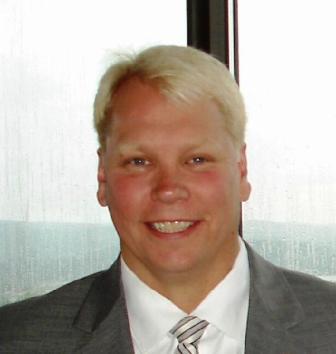Here are five initiatives for progressive ASC administrators to consider for a competitive place in the future healthcare market.
.jpg) 1. Contact big businesses for partnerships. As large hospitals have in the past, some surgery centers are now seeking partnerships with large businesses to provide care. ASCs can remove third party payors from the equation by inking deals with local companies to provide medical care for a set cost, which must be lower than they are able to achieve elsewhere.
1. Contact big businesses for partnerships. As large hospitals have in the past, some surgery centers are now seeking partnerships with large businesses to provide care. ASCs can remove third party payors from the equation by inking deals with local companies to provide medical care for a set cost, which must be lower than they are able to achieve elsewhere.
"We are reaching out directly to large employer groups going around the third party payors, and we plan to continue with that strategy," says Keith Smith, MD, co-founder and managing partner of the Surgery Center of Oklahoma in Oklahoma City. "We are able to carve out their care. More companies are interested in these carve out arrangements where they deal with us directly. The insurance companies aren't always acting in the best interest of large employers and we have basically redirected the patients to us, instead of the expensive hospitals where insurance companies want to funnel them."
OA Centers for Orthopaedics has also reached out to local businesses seeking partnerships, but change is sometimes hard to come by.
"We are finding an interesting problem because even though these businesses have talked for years about driving costs down, they are hesitant to make necessary changes," says John Wipfler, CEO of OA Centers for Orthopaedics. "As an example, they have been slow to step up and modifying their benefit structure to create incentives for employees to use preferred providers like ASC's. It is happening but at a slow pace. As reform efforts accelerate we anticipate a faster pace of engagement from employers. Creating incentives to move surgery from hospital settings to ASCs is such an easy way to create significant savings without compromising quality."
 2. Prepare for ICD-10. ICD-10 will kick off on Oct. 1, 2014, according to a recent change by the Department of Health and Human Services. Starting on that data, anyone filing a claim with an insurer or government health program must use a new diagnostic coding system that increase the number of codes from 14,000 (under ICD-9-CM) to 68,000 (under ICD-10-CM).
2. Prepare for ICD-10. ICD-10 will kick off on Oct. 1, 2014, according to a recent change by the Department of Health and Human Services. Starting on that data, anyone filing a claim with an insurer or government health program must use a new diagnostic coding system that increase the number of codes from 14,000 (under ICD-9-CM) to 68,000 (under ICD-10-CM).
A transition to ICD-10 will require training for physicians, coders and business office personnel, probable upgrades to surgery center software and discussions with payors about any changes that will occur under the new system.
"You have to be budgeting for your people to attend seminars and classes," Joe Zasa, managing partner with ASD Management, says. He also recommends setting aside money in case of payment delays, while payors adjust to the new system. "I think payors are going to struggle due to the voluminous nature of the change for them," he says. "It may be a real challenge."
3. Make website upgrades. For many patients, the first introduction to your surgery center will be online, so your website should make a good impression. It should include links to physician practices so patients can research their surgeon. The site should also be easy for patients to navigate and include quality data front and center.
 "Make it easy for patients to see all these things," says Reed Martin, COO of Surgical Management Professionals. "We're considering initiatives that would allow our websites to be more accessible and to drive traffic there. We are also working to improve links on our websites and making sure our content is up to date."
"Make it easy for patients to see all these things," says Reed Martin, COO of Surgical Management Professionals. "We're considering initiatives that would allow our websites to be more accessible and to drive traffic there. We are also working to improve links on our websites and making sure our content is up to date."
There are companies that can help improve ASC websites and direct traffic to your target audiences. Using a few simple best practices, surgery centers can implement search engine optimization strategies that will direct patients in their area to the website when they search key words associated with your ASC.
4. Cost compare capital purchases. Over the next year, CMO plans to purchase new arthroscopy towers. Capital purchases add significant expense to the bottom line for surgery centers, but also present an opportunity to reduce operating expenses if the capital purchase can be used to leverage lower pricing on implants and disposables.
"We started working with one vendors and had all the big players come to the table," says Jeffrey Wigton, director of operations at Central Maine Orthopaedics. "This approach has significantly disrupted the market. We have arthroscopy vendors that do not have an implantable line team up with other vendors that do to pull together very creative proposals. This has taken on a life of its own. We now have several initiatives to decrease our costs for the both the capital equipment as well as disposables. What it will take from the surgeons is a commitment to a single vendor for a substantial portion of our business."
The practice may be able to save a significant amount of money on implantables in addition to savings on the arthroscopy towers.
"The market is consolidating and these large companies can sell you the whole package from capital equipment to implantables," says Mr. Wigton. "They can put together some pretty creative packages if you are willing to consolidate and contract with them. In the past we tried to beat up on vendors for better prices and we made some progress there, but I think this year we've found a new opportunity."
 5. Figure out how EMR can work for you. Surgery centers are now required to report quality data for Medicare cases and reimbursement from private payors may also depend on meaningful use data in the future. Electronic medical record systems can help gather this data, but are expensive capital purchases for freestanding ASCs. Make sure you select a system that will work for your ASC.
5. Figure out how EMR can work for you. Surgery centers are now required to report quality data for Medicare cases and reimbursement from private payors may also depend on meaningful use data in the future. Electronic medical record systems can help gather this data, but are expensive capital purchases for freestanding ASCs. Make sure you select a system that will work for your ASC.
"We need to replace nursing labor where they are chasing patients and entering data into the patient's charting, because that isn't helping patient care," says Jim Stilley, former CEO of a large ASC, currently a management consultant and Director of Clinical Workflow Consulting for Versus Technology. "In the future, technology will be able to help with this. The question is how to finance this technology when you are worried about margins."
EMR is designed to increase productivity and efficiency, but there is a learning curve for physicians and surgeons. Even after proficiency, it will take several key strokes for nurses to enter patient data.
"I think EMRs can help patient care, but we have to figure out how to make them work for us," says Mr. Stilley. "After ICD-10 and meaningful use, ASCs need to focus on getting the greatest output for the least input. Cut the parts of the process that don't add value to the patient care and find a system you can design around your workflow."
More Articles on Surgery Centers:
5 Steps to Cut Supply Costs at GI-Driven ASCs
4 Points on How ASCs Can Make Going Out-of-Network Work
When ACOs Come to Town: Q&A on Options for ASCs With Jon Friesen of Nueterra
.jpg) 1. Contact big businesses for partnerships. As large hospitals have in the past, some surgery centers are now seeking partnerships with large businesses to provide care. ASCs can remove third party payors from the equation by inking deals with local companies to provide medical care for a set cost, which must be lower than they are able to achieve elsewhere.
1. Contact big businesses for partnerships. As large hospitals have in the past, some surgery centers are now seeking partnerships with large businesses to provide care. ASCs can remove third party payors from the equation by inking deals with local companies to provide medical care for a set cost, which must be lower than they are able to achieve elsewhere."We are reaching out directly to large employer groups going around the third party payors, and we plan to continue with that strategy," says Keith Smith, MD, co-founder and managing partner of the Surgery Center of Oklahoma in Oklahoma City. "We are able to carve out their care. More companies are interested in these carve out arrangements where they deal with us directly. The insurance companies aren't always acting in the best interest of large employers and we have basically redirected the patients to us, instead of the expensive hospitals where insurance companies want to funnel them."
OA Centers for Orthopaedics has also reached out to local businesses seeking partnerships, but change is sometimes hard to come by.
"We are finding an interesting problem because even though these businesses have talked for years about driving costs down, they are hesitant to make necessary changes," says John Wipfler, CEO of OA Centers for Orthopaedics. "As an example, they have been slow to step up and modifying their benefit structure to create incentives for employees to use preferred providers like ASC's. It is happening but at a slow pace. As reform efforts accelerate we anticipate a faster pace of engagement from employers. Creating incentives to move surgery from hospital settings to ASCs is such an easy way to create significant savings without compromising quality."
 2. Prepare for ICD-10. ICD-10 will kick off on Oct. 1, 2014, according to a recent change by the Department of Health and Human Services. Starting on that data, anyone filing a claim with an insurer or government health program must use a new diagnostic coding system that increase the number of codes from 14,000 (under ICD-9-CM) to 68,000 (under ICD-10-CM).
2. Prepare for ICD-10. ICD-10 will kick off on Oct. 1, 2014, according to a recent change by the Department of Health and Human Services. Starting on that data, anyone filing a claim with an insurer or government health program must use a new diagnostic coding system that increase the number of codes from 14,000 (under ICD-9-CM) to 68,000 (under ICD-10-CM). A transition to ICD-10 will require training for physicians, coders and business office personnel, probable upgrades to surgery center software and discussions with payors about any changes that will occur under the new system.
"You have to be budgeting for your people to attend seminars and classes," Joe Zasa, managing partner with ASD Management, says. He also recommends setting aside money in case of payment delays, while payors adjust to the new system. "I think payors are going to struggle due to the voluminous nature of the change for them," he says. "It may be a real challenge."
3. Make website upgrades. For many patients, the first introduction to your surgery center will be online, so your website should make a good impression. It should include links to physician practices so patients can research their surgeon. The site should also be easy for patients to navigate and include quality data front and center.
 "Make it easy for patients to see all these things," says Reed Martin, COO of Surgical Management Professionals. "We're considering initiatives that would allow our websites to be more accessible and to drive traffic there. We are also working to improve links on our websites and making sure our content is up to date."
"Make it easy for patients to see all these things," says Reed Martin, COO of Surgical Management Professionals. "We're considering initiatives that would allow our websites to be more accessible and to drive traffic there. We are also working to improve links on our websites and making sure our content is up to date."There are companies that can help improve ASC websites and direct traffic to your target audiences. Using a few simple best practices, surgery centers can implement search engine optimization strategies that will direct patients in their area to the website when they search key words associated with your ASC.
4. Cost compare capital purchases. Over the next year, CMO plans to purchase new arthroscopy towers. Capital purchases add significant expense to the bottom line for surgery centers, but also present an opportunity to reduce operating expenses if the capital purchase can be used to leverage lower pricing on implants and disposables.
"We started working with one vendors and had all the big players come to the table," says Jeffrey Wigton, director of operations at Central Maine Orthopaedics. "This approach has significantly disrupted the market. We have arthroscopy vendors that do not have an implantable line team up with other vendors that do to pull together very creative proposals. This has taken on a life of its own. We now have several initiatives to decrease our costs for the both the capital equipment as well as disposables. What it will take from the surgeons is a commitment to a single vendor for a substantial portion of our business."
The practice may be able to save a significant amount of money on implantables in addition to savings on the arthroscopy towers.
"The market is consolidating and these large companies can sell you the whole package from capital equipment to implantables," says Mr. Wigton. "They can put together some pretty creative packages if you are willing to consolidate and contract with them. In the past we tried to beat up on vendors for better prices and we made some progress there, but I think this year we've found a new opportunity."
 5. Figure out how EMR can work for you. Surgery centers are now required to report quality data for Medicare cases and reimbursement from private payors may also depend on meaningful use data in the future. Electronic medical record systems can help gather this data, but are expensive capital purchases for freestanding ASCs. Make sure you select a system that will work for your ASC.
5. Figure out how EMR can work for you. Surgery centers are now required to report quality data for Medicare cases and reimbursement from private payors may also depend on meaningful use data in the future. Electronic medical record systems can help gather this data, but are expensive capital purchases for freestanding ASCs. Make sure you select a system that will work for your ASC."We need to replace nursing labor where they are chasing patients and entering data into the patient's charting, because that isn't helping patient care," says Jim Stilley, former CEO of a large ASC, currently a management consultant and Director of Clinical Workflow Consulting for Versus Technology. "In the future, technology will be able to help with this. The question is how to finance this technology when you are worried about margins."
EMR is designed to increase productivity and efficiency, but there is a learning curve for physicians and surgeons. Even after proficiency, it will take several key strokes for nurses to enter patient data.
"I think EMRs can help patient care, but we have to figure out how to make them work for us," says Mr. Stilley. "After ICD-10 and meaningful use, ASCs need to focus on getting the greatest output for the least input. Cut the parts of the process that don't add value to the patient care and find a system you can design around your workflow."
More Articles on Surgery Centers:
5 Steps to Cut Supply Costs at GI-Driven ASCs
4 Points on How ASCs Can Make Going Out-of-Network Work
When ACOs Come to Town: Q&A on Options for ASCs With Jon Friesen of Nueterra
